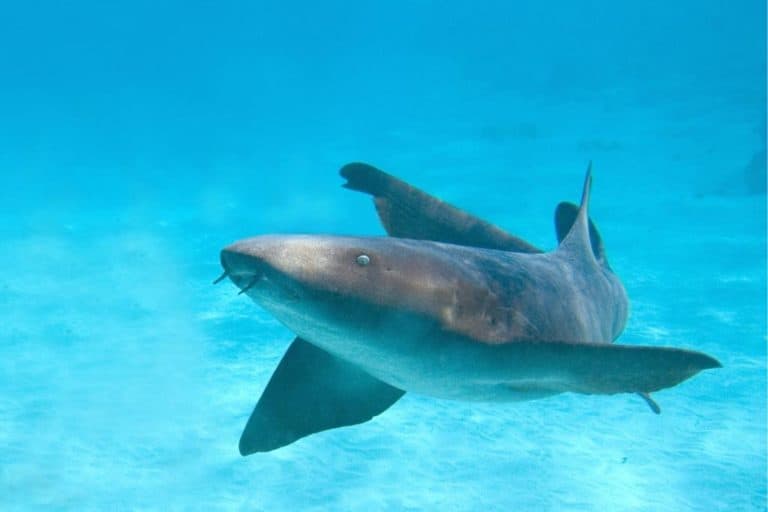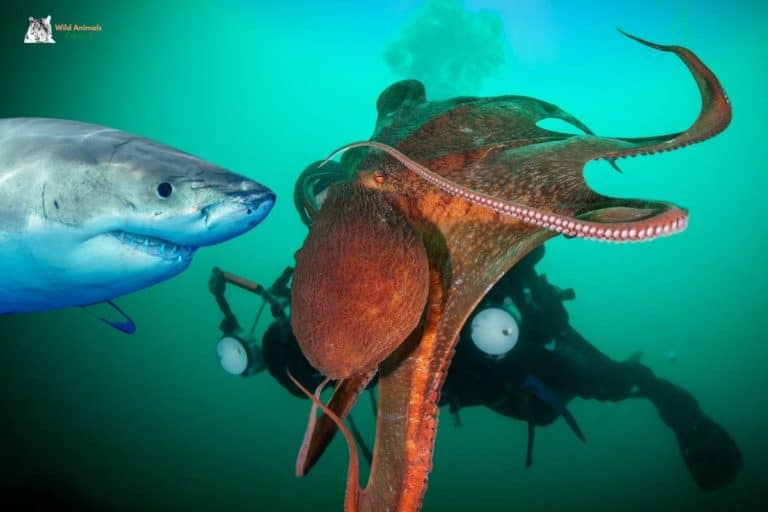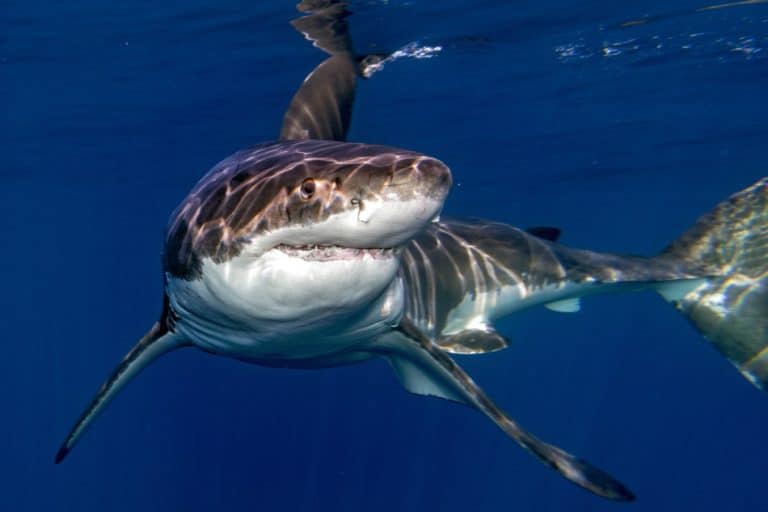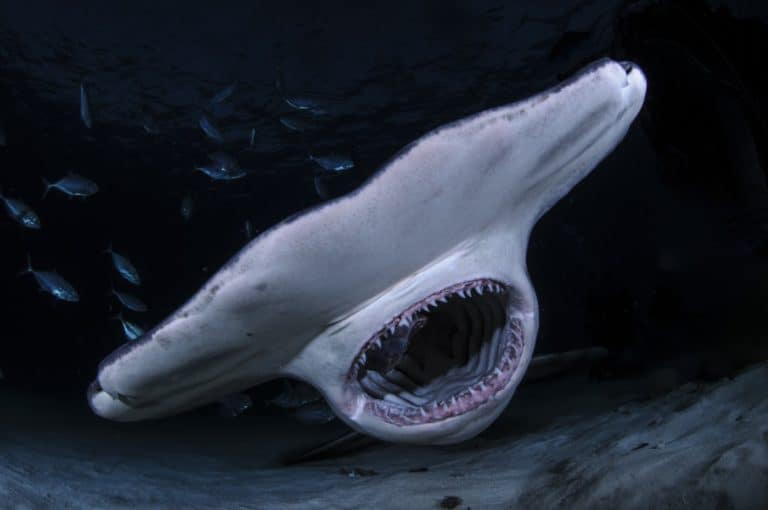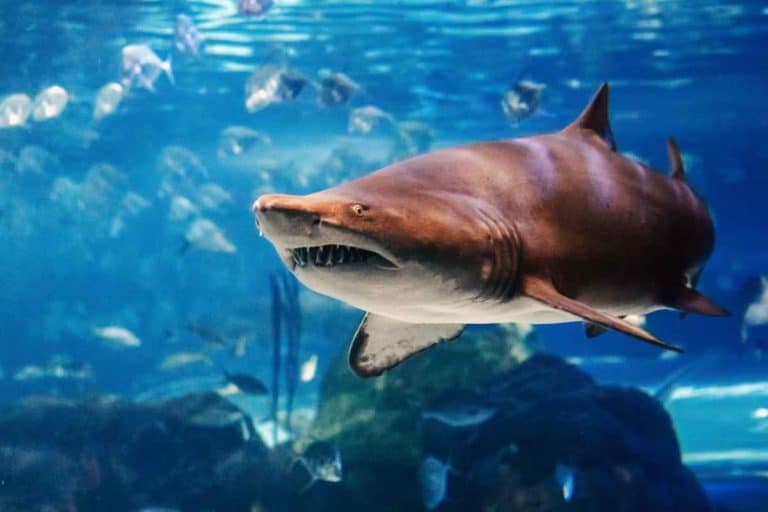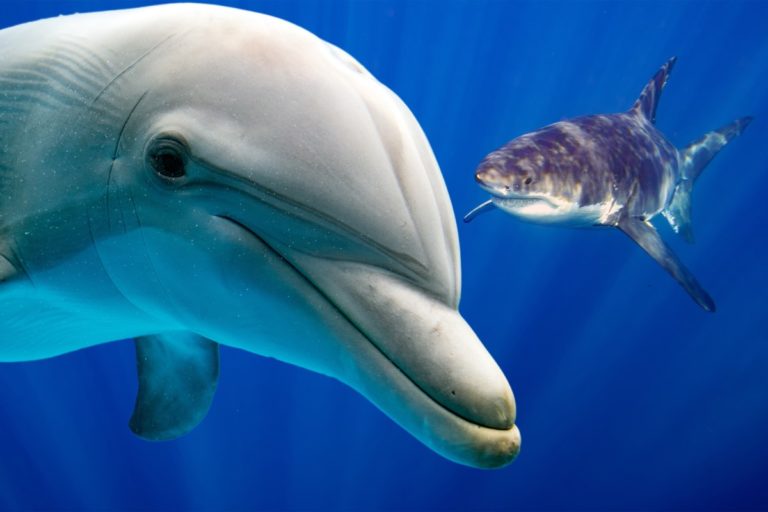What kind of sharks has no teeth? Here’s the List!
All Sharks Have Teeth. This is a common misconception as some sharks do not have teeth. Sharks are often mistaken as toothed creatures only, but this is not true as some sharks, such as the whale shark and basking shark, swallow food whole and do not need teeth at all.
However, most of these “teeth less” sharks possess dermal denticles, like tiny teeth, and break up the water flow over their gills. Denticles also help with movement as they create friction that allows sharks to move through the water quickly.
- The basking shark (Cetorhinus Maximus).
- The whale shark (Rhincodon typus).
- The megamouth shark (Megachasma pelagios).
- The nurse shark (Ginglymostoma cirratum).
Although the teeth of a shark can be pretty intimidating to look at, there is actually an abundance of species whose diets make their bite harmless.
A bottom feeder would have less danger from human contact than eating plankton and vice versa for those who mainly eat fish.
So what are the sharks with no teeth?
1. Basking Shark (Cetorhinus Maximus)
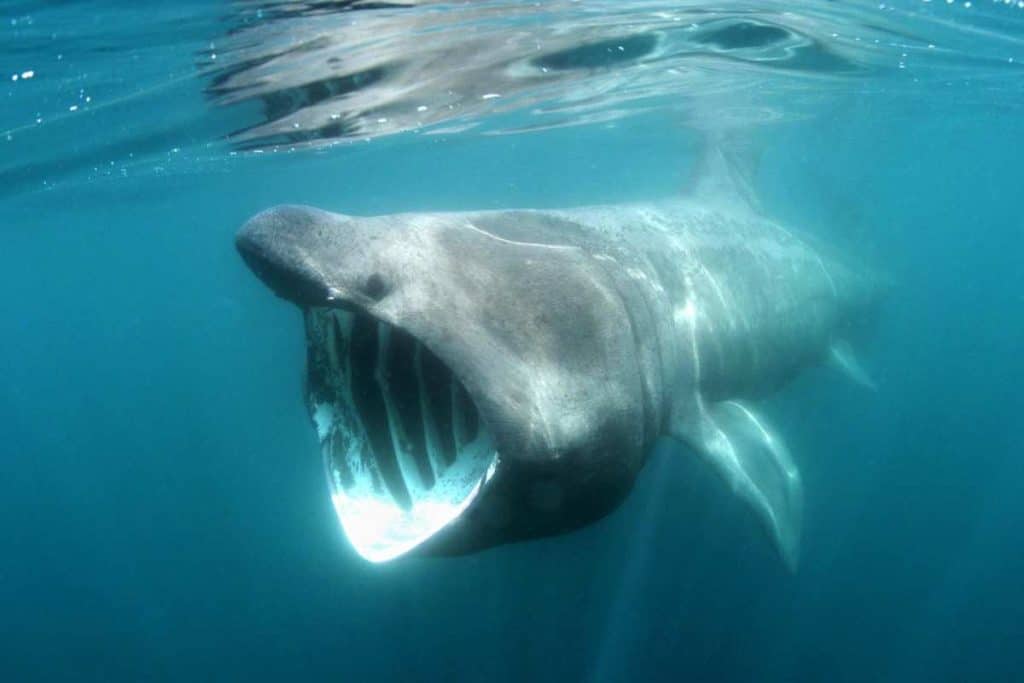
The basking shark is the second-largest fish in the sea, measuring an average of 9 meters long!
These gentle giants are filter feeders that spend their time gobbling up plankton and jellyfish.
They have a rich oily liver that provides them with sustenance and is a vital source of energy.
More often than not, their meals are consumed passively through filtering water as they swim by at a speed of 5 knots an hour!
The basking shark is a filter feeder.
2. Megamouth Shark (Megachasma Pelagios)
In 1976, this species was discovered off the coast of Hawaii, where it has been sighted ever since. It’s been found all over the globe, from Japan to Africa, and is extremely rare.
This shark does not have many teeth, to begin with, and they are not sharp or jagged like its cousins.
They have a large mouth that resembles that of a frogfish and possesses no visible nose! It eats plankton, jellyfish, and small fish close to the surface of the ocean.
The megamouth shark is a filter feeder.
3. Nurse Shark (Ginglymostoma Cirratum)
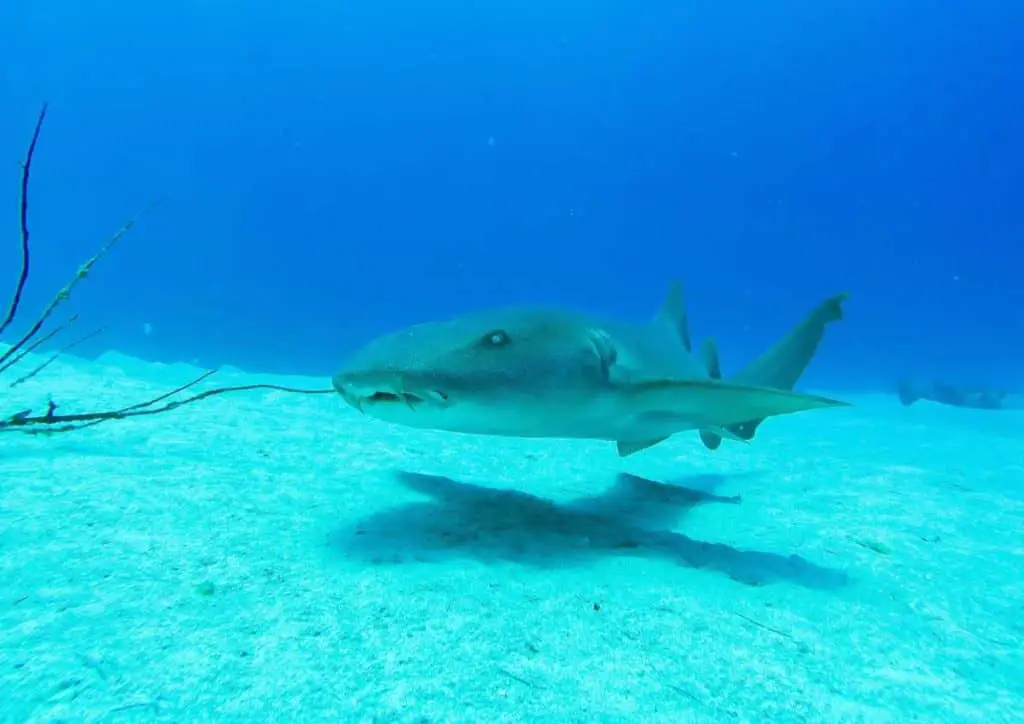
Found mainly in the warm coastal waters of North America and the Caribbean, this lazy creature can measure up to 4 meters long!
Its gills have a respiratory lining that enables them to extract oxygen directly from the seawater.
Their teeth are fused together to consume soft-bodied prey such as shellfish, mollusks, crabs, and smaller fish.
They swallow their food whole, which is then passed through their digestive system slowly to avoid any blockages that could occur if it went in too quickly!
Sharks harmless to humans:
Many more sharks fall into this category, but these are known as the “harmless to humans” group. The majority of them live in either freshwater or very shallow waters.
They have tiny teeth, too, which can break off quickly if they contact a human’s arm or leg.
They do not have very many teeth, to begin with, and have less chance of being a threat to humans. Some species that live closer to the surface will not even interact with people but swim past them without a thought!
1. Pygmy Shark (Euprotomicrus Bispinatus).
Found along with northern Australia and southern New Guinea, this shark measures only about 50 cm long!
It has a fearsome appearance to scare off predators with large eyes and spines on its body. Their teeth are not suitable for predation either, as they mainly feed on bottom-dwelling organisms like crustaceans, mollusks, worms, and sea urchins.
2. White Spotted Bamboo shark (Chiloscyllium punctatum).
These creatures are usually found close to areas with coral reefs where they hunt at night. They feed on crustaceans, shellfish, and mollusks, which they crush up using their teeth.
3. Leopard Shark (Triakis Semivittata).
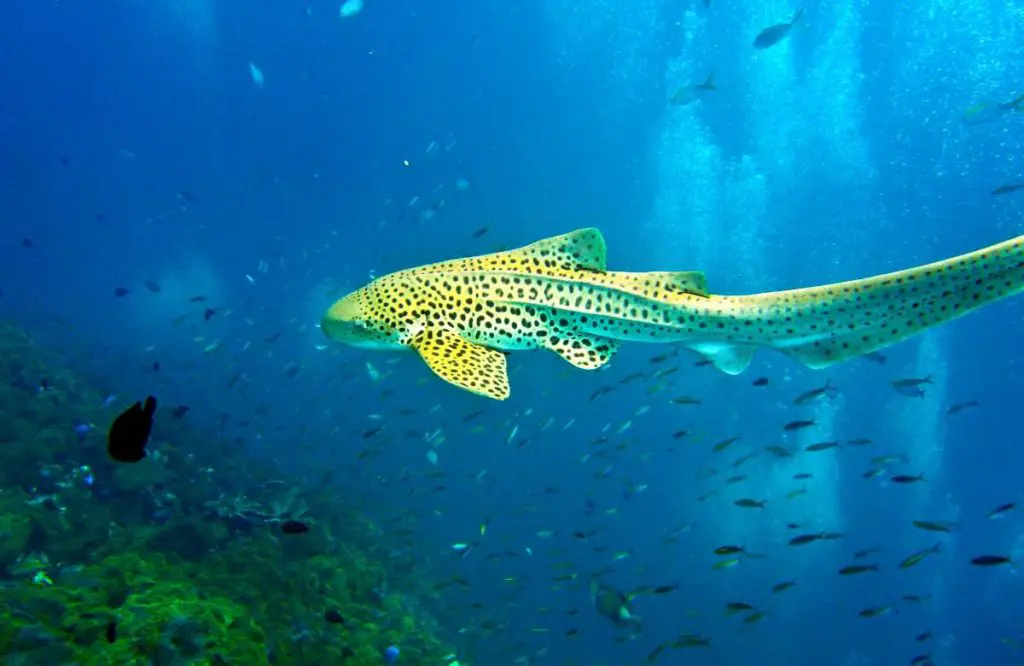
Found along the coasts of North America from Baja California, Mexico all the way up to British Columbia, Canada.
They are usually found swimming in shallow coastal waters and will even venture into brackish estuaries! Their favorite prey includes flounders, hake, herring, and sardines.
Leopard sharks have been known to venture into brackish waters!
4. Angel Shark (Squatina squatina).
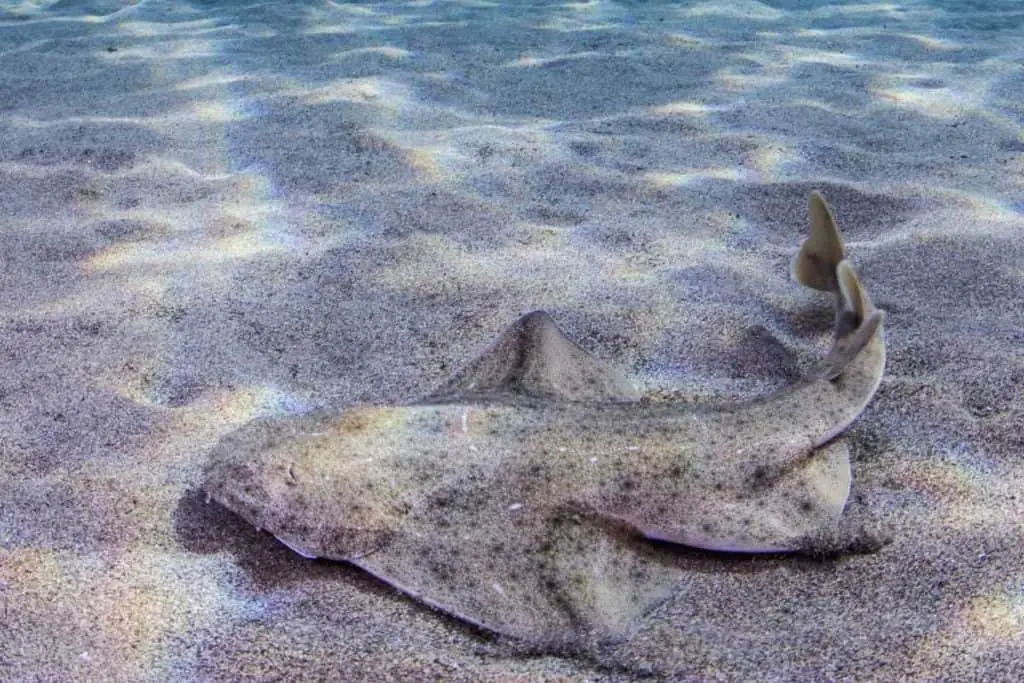
Found all over the world, they are mainly found in deep waters close to coasts. They can measure up to 3 meters long and have flat bodies with distinct triangular pectoral fins!
It has huge eyes to help it spot prey like small fish or crustaceans.
5. Bamboo Shark (Chiloscyllium plagiosum).
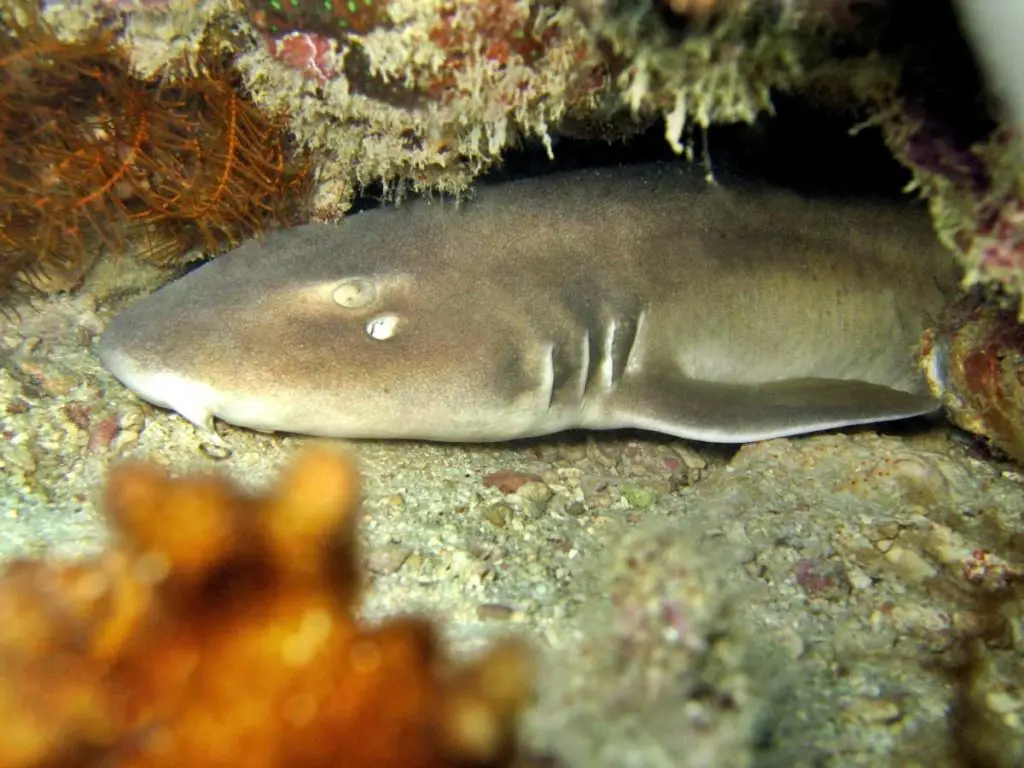
Originally native to the eastern coastline of Africa, they can now be found in waters along with the Indian and Pacific Oceans.
When fully grown, they only grow at most 35 cm long! They prey on small fish and crustaceans, which are then crushed up by their teeth.
Bamboo sharks have tiny teeth!
6. Scalloped Bonnethead Shark (Sphyrna corona).
Found in shallow coastal waters, they swim around in groups of up to a hundred young sharks.
They hunt using their exceptional sense of smell and eyesight for prey like mollusks, crabs, and even other sharks!
7. Goblin Shark (Mitsukurina owstoni).
Found off the coast of Japan, Korea, and even in the Gulf of Mexico! It is mainly found close to the seafloor at depths ranging from 150-500 meters.
They are so well adapted for this depth that they have no problems seeing or hunting prey, including fish, cephalopods, and other sharks!
The goblin shark is one of the rarest marine species in the world.
8. Greenland Shark (Somniosus microcephalus).
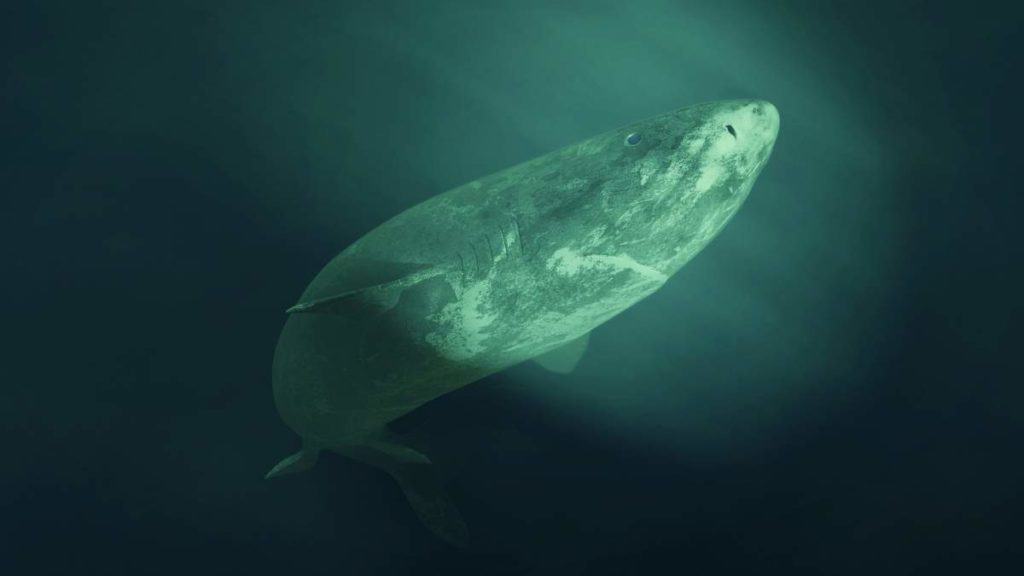
Found all over the North Atlantic, they are known to dive at depths up to 2,200 meters during winter months.
They mainly feed on fish like herring, flatfish, and even seals! This shark is slow-moving and hardly swims anywhere unless absolutely necessary.
Greenland sharks don’t move much due to their low metabolisms.
What is the most harmless shark?
It is the leopard shark. It is not considered to be a danger for humans and is not responsible for any attacks.
The leopard shark usually lives in shallow coastal waters along the Pacific coast and eats bottom-dwelling invertebrates and small fish.
Mature sharks can reach 1.5 meters in length, but most of them are about half that size.
They can be found from Baja, California, to Alaska, and around the Hawaiian Islands. The leopard shark is dark brown with large dark spots, which gives it its name.
It has a stout body and elongated, rounded snout with needle-like teeth in both jaws.
Do basking sharks have teeth?
The basking shark, Cetorhinus Maximus, does not have teeth. Instead, it has gill rakers that resemble teeth.
Gill rakers are bony projections found in certain fishes’ pharynx, which help prevent food from being sucked into the esophagus or trachea during feeding.
